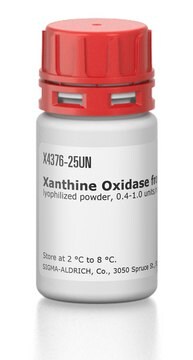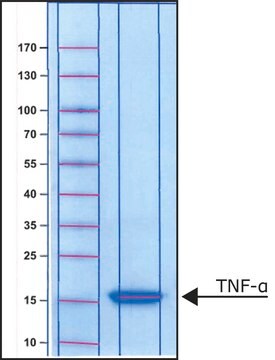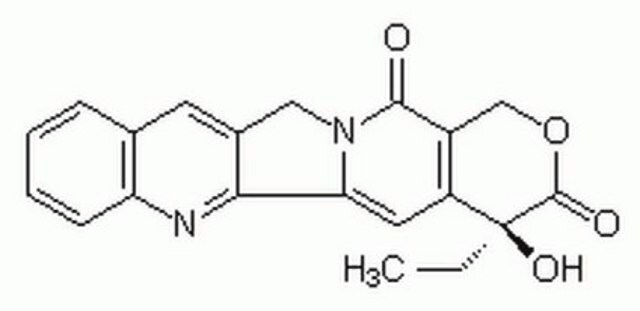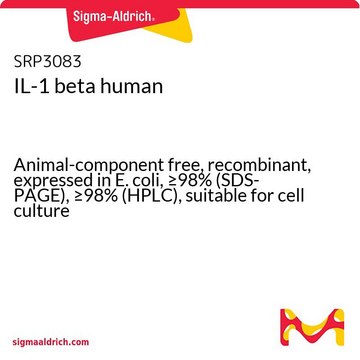Kluczowe dokumenty
T7799
Tumor Necrosis Factor-β human
>95% (SDS-PAGE), recombinant, expressed in E. coli, powder, suitable for cell culture | mammalian: suitable
Synonim(y):
TNF-β
About This Item
Polecane produkty
Nazwa produktu
Tumor Necrosis Factor-β human, TNF-β, recombinant, expressed in E. coli, powder, suitable for cell culture
pochodzenie biologiczne
human
Poziom jakości
rekombinowane
expressed in E. coli
Próba
>95% (SDS-PAGE)
Formularz
powder
siła działania
4-20 pg/mL Activity
jakość
endotoxin tested
masa cząsteczkowa
protein 18.8 kDa
opakowanie
pkg of 10 μg
warunki przechowywania
avoid repeated freeze/thaw cycles
metody
cell culture | mammalian: suitable
zanieczyszczenia
≤1 EU/μg
numer dostępu UniProt
temp. przechowywania
−20°C
informacje o genach
human ... LTA(4049) , TNFSF13B(10673)
Działania biochem./fizjol.
Postać fizyczna
Komentarz do analizy
Kod klasy składowania
11 - Combustible Solids
Klasa zagrożenia wodnego (WGK)
WGK 3
Temperatura zapłonu (°F)
Not applicable
Temperatura zapłonu (°C)
Not applicable
Środki ochrony indywidualnej
Eyeshields, Gloves, type N95 (US)
Wybierz jedną z najnowszych wersji:
Masz już ten produkt?
Dokumenty związane z niedawno zakupionymi produktami zostały zamieszczone w Bibliotece dokumentów.
Nasz zespół naukowców ma doświadczenie we wszystkich obszarach badań, w tym w naukach przyrodniczych, materiałoznawstwie, syntezie chemicznej, chromatografii, analityce i wielu innych dziedzinach.
Skontaktuj się z zespołem ds. pomocy technicznej







